Wind turbines harvest the renewable source of wind’s energy, but there are various types of wind turbines some of which could be used for small scale domestic applications and some used in wind power plants. Since going green is becoming more import by day and human civilization is highly reliant on energy, wind energy and the equipment by which it is harvested are now important more than ever. Therefore, it is quite beneficial to know about how various types of wind turbines look like and where they could be used.
On the Linquip platform, you’ll find all the information about wind turbines you need. If you have any questions related to the wind turbine, we are here to help. To start, visit Linquip and explore the article “What Is a Wind Turbine?” for a basic understanding of these renewable energy devices.
Are you in need of a wind turbine? For free, you can view a wide selection of Wind Turbine Products here at Linquip. What types of wind turbine equipment are you looking to buy? Linquip provides no-cost access to all available Wind Turbine Devices for Sale. Linquip also provides you the option to send inquiries to all Wind Turbine Suppliers and Companies and receive quotations for free if you are trying to find wind turbine prices.
As nice as having access to a platform making it easy to find the right wind turbine would be, which is here, it would also be interesting to have access to a short guide that would explain how different various wind turbines are, which is what this post is all about. So, stay for more on the different types of wind turbines.
Wind Energy: What It Is and What Are Its Types
Various factors act to put the atmosphere into motion, a phenomenon we call wind. Now, this naturally occurring motion or kinetic energy is out there, and it only seems reasonable to find ways to harvest it. Easy wind kinetic energy is nothing new for us humans. We have already used it to turn our windmills since almost a thousand years ago. As another example, we have been using it in windjammers for so long. But are there any other ways to use wind energy in a more tangible application?
The answer is of course a big YES! The essential idea is that the kinetic energy of wind can be used to rotate some equipment, as it is the case with windmills, but this time to generate electricity, as it is the case for gas turbines where the hot gas turns the turbine and generates power. Therefore, what we generally mean these days by wind energy is wind power, which is generating electrical energy from wind kinetic energy using equipment called wind turbines.
We may classify wind based on where its energy is harvested into land wind and offshore wind. Land wind itself can be further classified into two types of “small wind” or “distributed wind”, and utility-scale” wind:
- Small wind refers to using wind energy in small scale for homes, farms, and businesses, for which small wind turbines with powers up to 100 KW are used to provide the required power. In this setup, the win turbines are not connected to the grid, and their generated power is directly consumed by the end user.
- Utility-scale wind refers to using wind energy in large scale power generation applications. The wind turbine used for this wind have sizes within the range of as low as 100 KW to as high as several megawatts. Despite small wind turbines, the generated power of utility-scale wind turbines is injected into the power grid to be distributed and used by the end users.
- Offshore wind, as the name suggests, is using wind energy at offshore areas by installation of large wind turbines in them. The offshore-based wind turbines are larger than land-based wind turbines, and therefore, can usually generate more power than their land-based counterparts.
Wind turbines that realize the conversion of wind energy to electrical energy can also be categorized into different types. Wind turbines are in the most general sense categorized into the two types of Horizontal Axis Wind Turbine (HAWT) and Vertical Axis Wind Turbine (VAWT). Despite there are wind turbines that would belong to neither of these two types, due to their very limited implementation in real applications, we may naturally stick with the two types of HAWT and VAWT as the main types of wind turbines used in action.
Types of Wind Turbines: HAWT
One of the important types of wind turbines is the HAWT, which is the most widely used wind turbine out there. These types of wind turbines are probably what you would think of when you hear “wind turbine.” The design of these turbines follows pretty much the same idea already implemented in windmills; rotor blades that are connected to a shaft and rotate it as the wind strikes them, only this time the shaft is connected to a generator that produces the promised electrical energy. They look something like a large aircraft propeller mounted on top of a mast or tower.
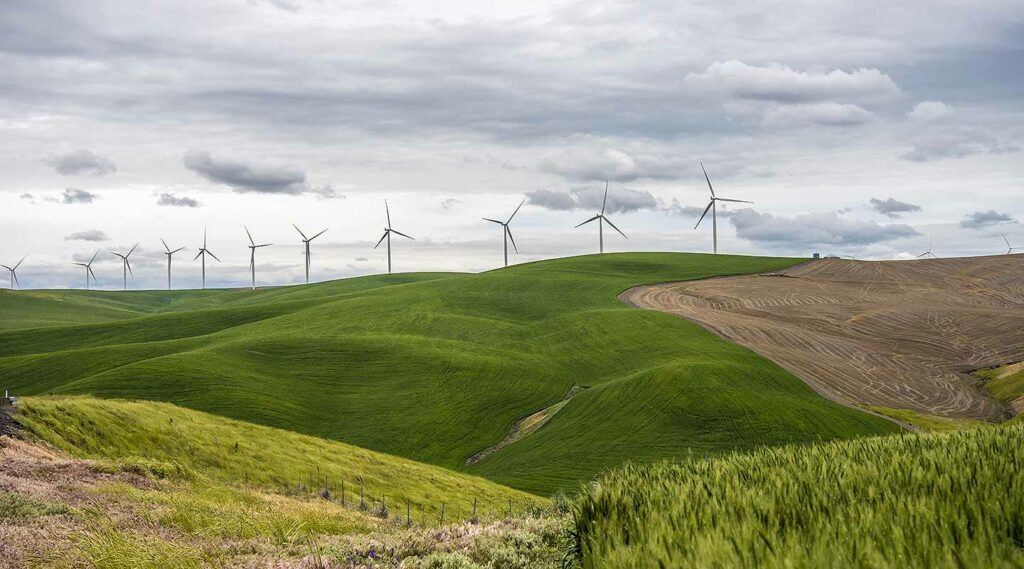
Horizontal axis wind turbines are one of the types of wind turbines that require being aligned with the wind direction. Therefore, they require a wind sensor that detects the direction of wind and some yawing mechanism that turns the device in order to be properly aligned against the wind. The reason for necessity of facing the wind is both a more effective distribution of force on the rotors, and prevention of structural damage to the turbine due to improper loading on the turbine structure.
Speaking of structural considerations, the structure of horizontal axis wind turbines needs to be strong enough to support the weight of the rotor blades, gearbox, generator, and other components of the turbine. Additionally, the base of the mast shall be able to withstand strong winds that are blown where the turbine is installed.
From different types of wind turbines, HAWTs are the most commonly used type due to their efficiency and higher power generation capability for the same footprint. Therefore, most wind farms, that are power plants with a number of wind turbines generating power, use these types of wind turbines.
Horizontal axis wind turbines basically include two types namely up-wind turbines and down-wind turbines. Let us discuss each further in the following.
Up-wind Turbines
These types of wind turbines are the ones most commonly used. Up-wind HAWTs face the wind, which means the wind reaches the rotors before the mast. Therefore, rotors do not suffer from the wind shade behind the tower, which means a more efficient operation as well as less susceptibility to wear and tear of the rotors. Nonetheless, the necessity for the yawing mechanism adds to the weight of the structure.
Another point about up-wind types of wind turbines is that their rotors should not be flexible, so that they would not bend and collide with the mast when the speed of wind is high. To further avoid such incidences, the rotor is placed at some distance from the tower. This adds to the manufacturing difficulties of these types of wind turbines, and the rather inflexibility of the rotor blades equals requiring heavier material for blade construction.
Down-wind Turbines
Down-wind horizontal axis wind turbines are the less commonly seen types of wind turbines. Their design looks pretty much the same as up-wind HAWTs except for the location of rotor, which is downstream of the tower; the wind strikes the mast before it reaches the blades. This configuration allows for more flexibility of the rotor blades, and therefore, lighter material can be used. Hence, this design serves two purposes of lighter structural weight and better structural dynamics of the tower by taking some of the load off the tower to the blades during their bending.
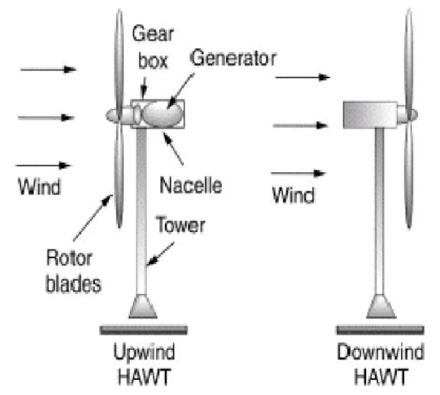
Down-wind horizontal axis types of wind turbines theoretically do not require any yawing mechanism as long as the rotors and the casing are designed in a way the casing would passively follow the wind direction. The passive yawing of these wind turbines would not be an advantage for large wind turbines that have earthing cables attached to the casing.
Since the rotor of these types of wind turbines are located behind downstream of the mast, they suffer from the wind shade. Wind shade not only induces fluctuations in the amount of power generated, but also results in more fatigue of down-wind types of wind turbines compared to their up-wind counterparts.
Types of Wind Turbines: VAWT
Vertical axis wind turbines (VAWT) are one of the types of wind turbines for which rotors rotate a shaft that is installed vertically. Such way of design allows for less sensitivity regarding wind direction, making them the perfect choice for places where the wind direction frequently changes. No matter what direction the wind blows, the blades would still move and rotate the shaft to produce power.
The generator of these types of wind turbines is located near the ground. This is because taking it to a height would not be so plausible given the design of rotors and their height. This configuration makes the maintenance of the vertical axis wind turbines easier compared to horizontal axis wind turbines, which has all the components installed at some height. However, vertical axis wind turbines have less efficiencies than HAWTs due to significant amount of air drag on the rotors for some designs, as well as less power output due to the fact that wind speed and its flow at a distance from the ground is higher and smoother than ground level.
Savonius Turbines
The force that makes Savonius turbines turn is drag, which makes them of drag-type VAWTs. The idea of their design is pretty much similar to cup anemometers. In cup anemometers, such as the one below, there is always a cup facing the wind experiencing the most drag exerted on its surface, while other cups have their other round-shaped and hence drag-lowering surfaces facing the wind.
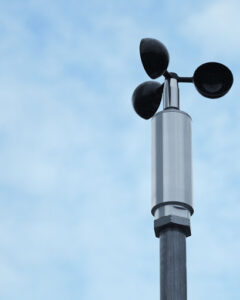
What happens in Savonius types of wind turbines follows the same logic. As can be seen in the figure below, there is always a surface with the most drag while others experience less drag force exerted on them.
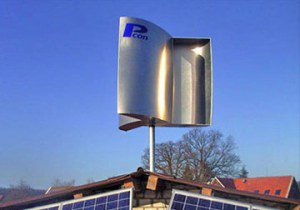
The important point about this design is that it would rotate no matter what direction the wind blows. These types of wind turbines are also very good at working with low-speed winds, are easy to manufacture and maintain, and are work well in turbulent wind. Despite these advantages, this design is highly inefficient. It is because the favorable and adverse drag forces are not so different from each other, and therefore, the speed of rotation would not be so high.
These types of wind turbines can self-start due the high torque generated, but their low RPM means there cannot be a lot of electrical energy produced at the generator. Therefore, they cannot be used for large scale power generation, and could only be good for small scale applications where other types of wind turbines could not work so well.
There are these twisted Savonius turbine designs that have long helical scoops that generate torque smoothly that could be used on rooftops.
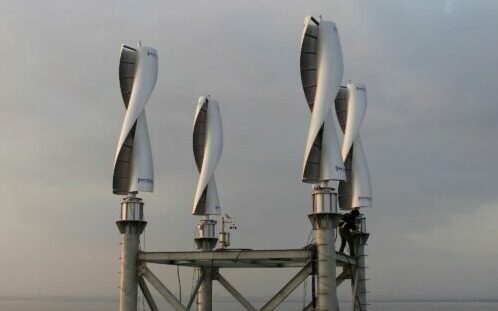
Darrieus Turbines
Darrieus wind turbines in contrary to the Savonius wind turbines are of the lift-type VAWTs, in which the idea of lift production of airfoils has been implemented. These types of wind turbines are the most widely used type of vertical axis wind turbines for power generation with curved blades, C-shaped, that go from the top of tower to the bottom where it is connected to the generator shaft. They have good efficiency because they rotate at higher speeds that could generate more power.
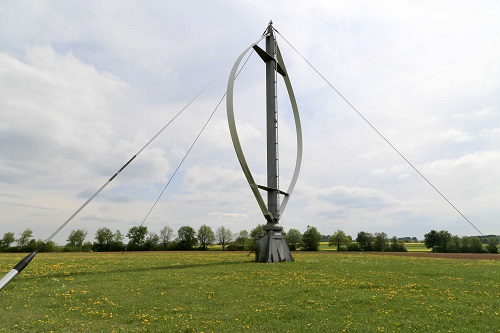
This higher RPM comes with lower torque to a level that necessities an external source of starting mechanism for these types of wind turbines, such as another Savonius turbine that would bring the speed of rotation to a level where the Darrieus blades could “take the wheel”. They also suffer from torque ripple, which is a periodic increase and decrease of the generated torque, and therefore periodic stress on the tower structure. Three bladed Darrieus wind turbines do not suffer from this torque ripple issue.
Giromill Turbines
Giromill wind turbines are inspired by Darrieus turbines. These types of wind turbines, therefore, are of the lift-type VAWTs with straight vertical blades instead of curved ones. Giromill turbines are not self-starting same as Darrieus wind turbines, and might not have a steady speed of rotation. Therefore, they are not as efficient as the Darrieus turbines are. Nonetheless, they are cheaper, easier to manufacture, and can work well in turbulent winds.
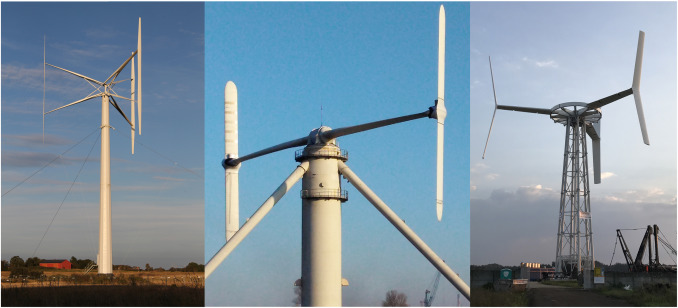
Cycloturbines
Cycloturbines are very much similar to Giromill wind turbines, and are actually a variant of Giromill wind turbines that are in a way a hybrid-type of vertical axis wind turbines. The reason is that for their airfoil blades are of the variable-pitch type. When the wind is not fast enough, which is mostly the case during the start up of the turbine, the blades are pitched against the wind in a manner similar to the idea of Savonius wind turbines to produce the most drag and torque to make a self-starting wind turbine.
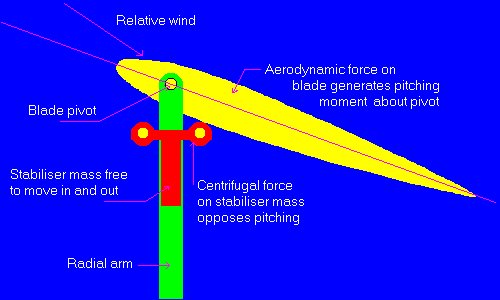
When the turbine reaches a specific RPM, the blades change their pitch in order to produce more lift rather than drag to take the RPM to even higher levels, similar to how it is for Darrieus wind turbines. As interesting as it sounds to have such an efficient and flexible VAWT, it is clear that their design and manufacturing is more complicated than the other designs making them expensive, and will have more components, and therefore, are heavier with more maintenance requirement.
Other Designs
The quest for more efficient and innovative wind turbine design does not end here. There are many other designs out there such as ducted rotors, shrouded wind turbines, co-axial multi-rotor turbines, counter rotating turbines, etc. for HAWTs. For VAWTs there are enclosed blades, H-rotor, O-wind turbines, etc.
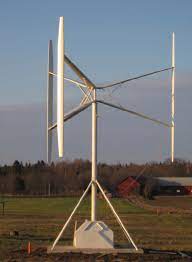
Apart from these newer designs of the same HAWT and VAWT concepts, there are bladeless wind turbines such as vaneless ion wind generators, boundary layer turbines, etc.
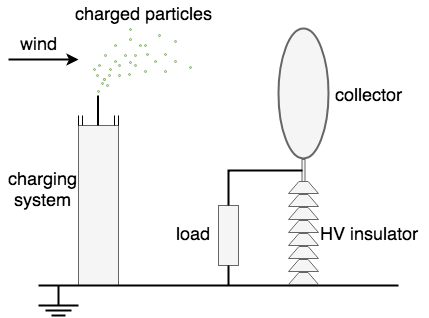
Some other concepts are also gaining momentum, such as SheerWind’s INVELOX that first collects air from different directions, funnels it to a section that reaches a Venturi, in which a turbine with a higher frequency than conventional HAWTs is placed.
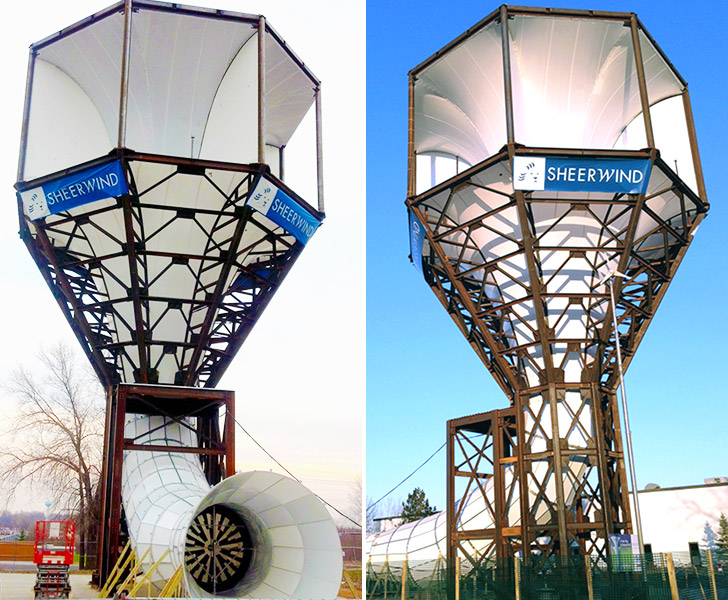
What Are the Environmental Effects of Wind Turbines?
Despite its many benefits, wind energy is a potential threat to the environment, including the reduction, fragmentation, and degradation of wildlife, fish, and plant habitats. The spinning blades of turbines can also be dangerous to flying creatures like birds and bats.
Does It Make Sense to Invest in a Home Wind Turbine?
Residential wind turbines can be a profitable and practical power source for homeowners in the right circumstances. A wind turbine may not provide all the electricity you need, but it could lower your electricity bills significantly. Make sure you choose the suitable turbine for your location.
Download PDF for Types of Wind Turbines
You can also download a PDF version of this article to your computer. The document below can be downloaded.
There are simply a lot of interesting wind turbines out there that is way out of the scope of this post, but you could research them on your own. This post has tried to be a good start with some useful keywords to help you continue the journey by yourself. You can also watch here for some introductory videos about wind turbines. Good luck!
Read More In Linquip
- What is Wind Turbine? The Short and Essential Answer
- Wind Energy Advantages and Disadvantages Fully Explained
- Different Types of Renewable Energy: An Easy-to-Understand Guide
- Types of Solar Energy: Learn the Basics, Get the Most Out of It!
- Types of Propellers, Historical Development, and The Ways of Their Construction
- How Fast Does a Wind Turbine Spin? The Surprising Answer
- What are Floating Wind Turbines
- The 8 Best Home Wind Turbines in 2021
- Efficiency of Wind Turbines
- 6 Best Home Wind Turbines (Residential): A Practical Guide
- How Do Wind Turbine Generators Work?
- Efficiency of Wind Turbines
- What are Floating Wind Turbines? A Practical Guide to Advantages and Types
- How Fast Does a Wind Turbine Spin? The Surprising Answer
- What is Low Head Turbines?
- How Do Wind Turbine Generators Work?
- How Does a Steam Turbine Work? A Simple Descriptive Guide
- Steam Turbine Efficiency: Complete Explanation
- What is Turgo Turbine and How does it Work?
- Types of Propellers, Historical Development, and The Ways of Their Construction
- Types of Turbines: Classifications and Types
- Why Is Wind Energy Considered A Renewable Resource?

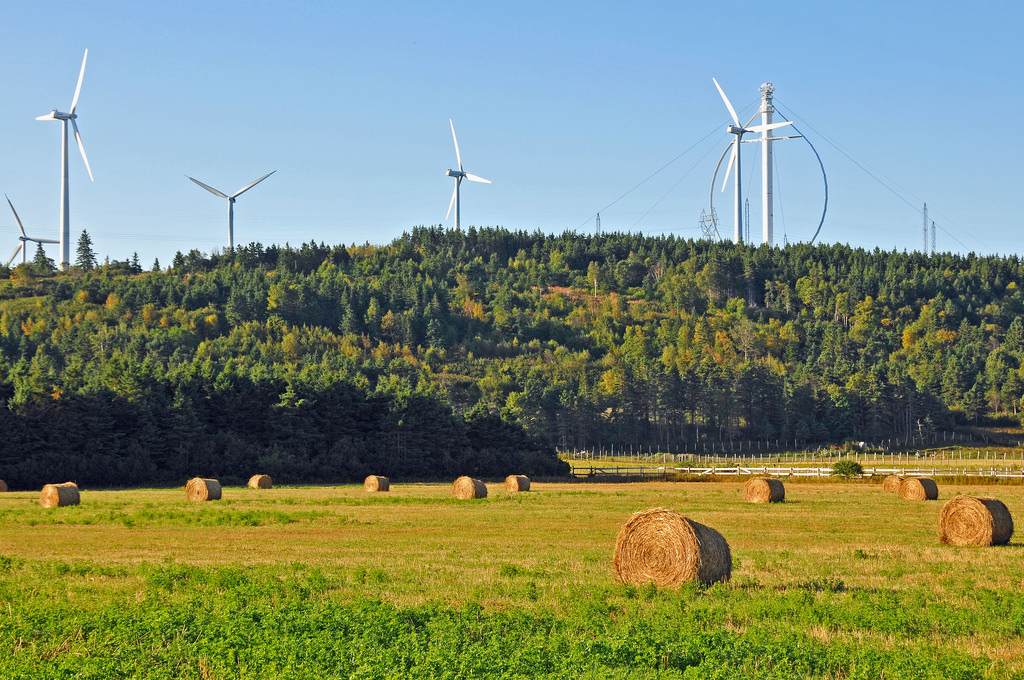
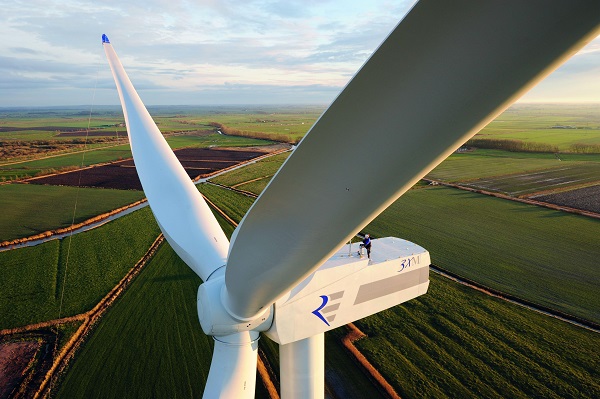


Useful Information. Thanks for Sharing.
Very useful information on Renewable Energy
Dear WinDcart
Thanks for your Attention.
Nice information. I want some more information. for home appliances wind turbine canactions.
wow extremely informative for intro thanks.
Thanks for visiting our website and leaving your comment, Devon! We hope to hear from you again in our other posts.